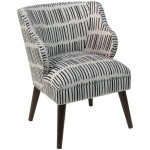Chair Height vs. Comfort Height Toilets: A Comprehensive Guide
Choosing the right toilet can significantly impact bathroom comfort and accessibility. A key factor to consider is the toilet's height, often categorized as standard or comfort height (also known as chair height). Understanding the differences between these two options is crucial for making an informed decision.
Standard Toilet Height
Standard height toilets have a rim height of approximately 14-15 inches from the floor. This has been the traditional height for toilets for many years and is still commonly found in older homes. While standard height toilets are widely available and often more affordable, they may not be suitable for everyone, particularly taller individuals or those with mobility issues.
Comfort Height/Chair Height Toilets
Comfort height toilets, also commonly referred to as chair height toilets, typically measure between 17-19 inches from the floor. This heightened design offers several advantages, especially for individuals with knee or back problems. The elevated seat makes sitting down and standing up easier, reducing strain on joints.
Key Differences: A Comparative Overview
The primary difference between standard and comfort height toilets lies in their rim height. This seemingly small variation can significantly impact user experience. Comfort height toilets offer a more comfortable seating experience, mimicking the height of a standard chair, hence the name "chair height." This makes them a preferred option for many, especially in modern bathroom renovations.
Advantages of Comfort Height Toilets
The increased height of comfort height toilets offers several benefits. The easier sit-and-stand motion can be particularly advantageous for older adults, people with disabilities, and those recovering from surgery. The added comfort can also be appreciated by taller individuals who find standard height toilets too low.
Advantages of Standard Height Toilets
While comfort height toilets are gaining popularity, standard height toilets still hold some advantages. Their widespread availability often translates to lower costs. They also fit well in existing bathroom layouts where plumbing is designed for the traditional height. For smaller individuals and children, standard height toilets may be more comfortable and easier to use.
Considerations for Choosing the Right Height
Selecting the appropriate toilet height depends on several factors. Individual height and physical limitations are primary considerations. Existing bathroom plumbing may also influence the choice, as altering plumbing to accommodate a different height toilet can add to renovation costs. User preferences and overall bathroom design should also be taken into account.
Measuring for the Right Fit
To determine the ideal toilet height, consider measuring the distance from the floor to the top of the user's knees when seated in a comfortable chair. This measurement can serve as a guide for selecting a toilet height that allows for comfortable sitting and standing. It is also important to consider the overall bathroom space and ensure the chosen toilet fits proportionally within the room.
Universal Design and Accessibility
Comfort height toilets are a key element in universal design principles, which aim to create environments usable by people of all ages and abilities. The increased height improves accessibility for individuals with mobility limitations, promoting greater independence in the bathroom. This makes comfort height toilets a popular choice in both residential and commercial settings.
Compliance with Building Codes and Regulations
While specific regulations vary, some building codes now mandate or recommend comfort height toilets, particularly in accessible restrooms. It is advisable to consult local building codes and accessibility guidelines when planning a bathroom renovation or new construction project to ensure compliance.
Cost Considerations
Generally, comfort height toilets tend to be slightly more expensive than standard height models due to their design and features. However, the long-term benefits of improved comfort and accessibility often outweigh the initial cost difference. Furthermore, the increasing popularity of comfort height toilets has led to a wider range of options available at various price points.
Aesthetic Considerations
Modern bathroom designs often favor the sleek and contemporary look of comfort height toilets. Their elevated profile can enhance the overall aesthetic appeal of the bathroom. Furthermore, many comfort height toilets come with features like elongated bowls and dual-flush systems, adding to both functionality and style.
Long-Term Value and Resale Potential
Investing in comfort height toilets can enhance the long-term value of a property. Their accessibility features and modern design can be attractive to potential buyers, making the property more appealing in the real estate market. The improved comfort and usability offered by comfort height toilets are features that are likely to remain desirable in the future.

Standard Height Vs Comfort Toilets Henry Plumbing

Toilet Height Let S Clear Up The Confusion

Comfort Height Vs Standard Toilet Roberts Plumbing Inc

Find The Loo That S Right For You Gerber Toilets

Standard Height Vs Comfort Toilet Which Is Better

Lies And Truth About Comfort Height Toilets Toilet Found

Understanding The Importance Of Ada Toilet Height Creating Accessible

Comfort Height Toilet Vs Standard Youtube

Comfort Height Vs Chair Toilet Which One Is Right For You

Standard Height Vs Comfort Toilets Which To Choose








